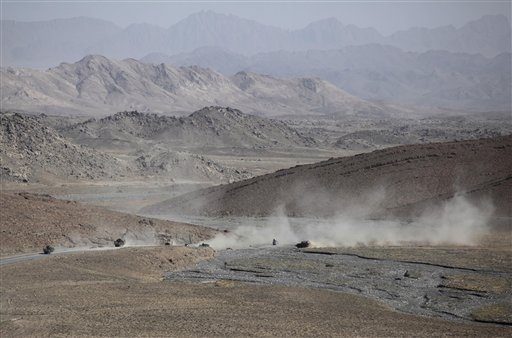General McChrystal Recalled: What’s Important About This?
BY Herschel SmithGeneral Stanley McChrystal and his staff have allowed close access by Michael Hastings writing for Rolling Stone, and the report contains somewhat embarrassing information for the Obama administration. You can read for yourself and judge whether the views expressed by the General and his staff rise to the level of insubordination, and if so, what should be done about it. Frankly, I don’t think it matters very much. But when considered as part of the general warp and woof of their relationship, it’s a little late to be complaining about how dense the administration officials are, regardless of how true that view is. Recall that this conversation took place.
Inside the Oval Office, Obama asked Petraeus, “David, tell me now. I want you to be honest with me. You can do this in 18 months?”
“Sir, I’m confident we can train and hand over to the ANA [Afghan National Army] in that time frame,” Petraeus replied.
“Good. No problem,” the president said. “If you can’t do the things you say you can in 18 months, then no one is going to suggest we stay, right?”
“Yes, sir, in agreement,” Petraeus said.
“Yes, sir,” Mullen said.
The president was crisp but informal. “Bob, you have any problems?” he asked Gates, who said he was fine with it.
The president then encapsulated the new policy: in quickly, out quickly, focus on Al Qaeda, and build the Afghan Army. “I’m not asking you to change what you believe, but if you don’t agree with me that we can execute this, say so now,” he said. No one said anything.
“Tell me now,” Obama repeated.
“Fully support, sir,” Mullen said.
“Ditto,” Petraeus said.
General McChrystal had to be aware of the stipulations when he took the assignment. The time to have told the administration that commitment to a counterinsurgency campaign would take another half decade or more and that military force would have to be applied was a year ago. But in the focus on not missing the forest for the trees, it’s important not to miss the tress for looking at the forest. At least, the important trees should be studied.
There is such a tree in this report in The Washington Post that deserves our utmost attention.
A few weeks ago, according to the magazine, the general traveled to a small outpost in Kandahar province, in southern Afghanistan, to meet with a unit of soldiers reeling from the loss of a comrade, 23-year-old Cpl. Michael Ingram.
The corporal was killed in a booby-trapped house that some of the unit’s commanders had unsuccessfully sought permission to blow up.
One soldier at the outpost showed Hastings, who was traveling with the general, a written directive instructing troops to “patrol only in areas that you are reasonably certain that you will not have to defend yourself with lethal force.”
During a tense meeting with Ingram’s platoon, one sergeant tells McChrystal: “Sir, some of the guys here, sir, think we’re losing, sir.”
McChrystal has championed a counterinsurgency strategy that prioritizes protecting the population as a means to marginalize and ultimately defeat the insurgency. Because new rules sharply restrict the circumstances under which airstrikes and other lethal operations that have resulted in civilian casualties can be conducted, some soldiers say the strategy has left them more exposed.
When you cannot patrol in areas where you think you might engage in kinetic operations because of the highly restrictive rules, you know that the campaign won’t last much longer. Similarly, another NCO believes that the rules of engagement are too prohibitive to achieve sustained tactical success. He reports that villagers are quite literally laughing at U.S. troop casualties, and that they cannot even obtain approval for illumination rounds to assist in withdrawal during firefights.
When NCOs begin to give these kinds of reports, we know that there is something badly wrong with the campaign on a much deeper level than mere sniping between civilian and military authorities. We are losing the campaign in Afghanistan, and recalling General McChrystal won’t change that. Much deeper changes need to be made, and a much deeper commitment should become evident by the administration, or men will die for a failing cause. The time to make these changes has almost run out.




